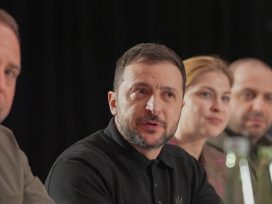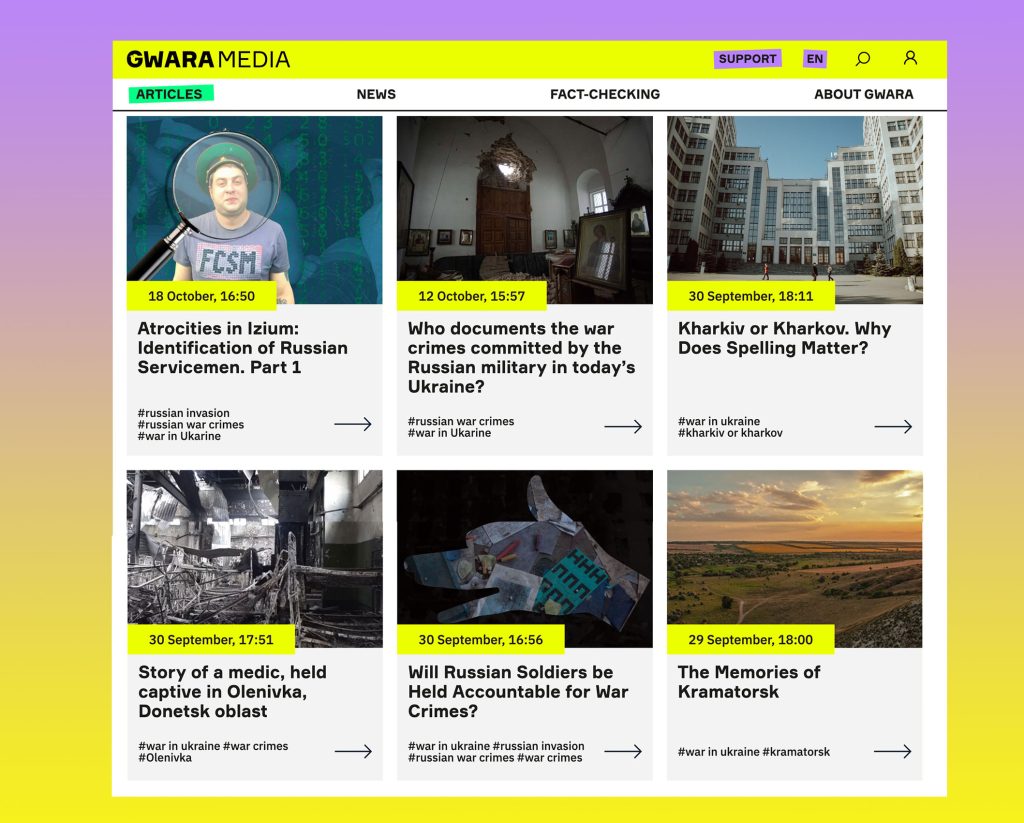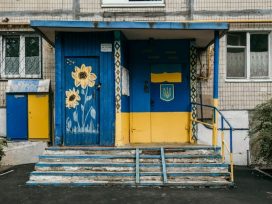
The ‘Trump–Putin deal’ again places Ukrainians in a subaltern role. The leaked contract with its fantasy $500 billion ‘payback’ has been compared to Versailles, but the US betrayal recalls nothing so much as Molotov–Ribbentrop.
Photos of Kherson’s emergence from occupation; visiting one of Ukraine’s ‘hubs of unbreakable-ness’; Aleksander Wienerberger’s images of the Holodomor; and exhibiting artefacts of the invasion.
Following 256 days under occupation by Russia, the southern city of Kherson and the right bank of the Kherson region was liberated by the Ukrainian armed forces on 11th November. Local residents greeted Ukrainian forces on the streets with the national flag. Now the destruction of the city, and the suffering and resilience of its residents, is becoming visible for the world to see. In Gwara Media, Oleksandr Mahula, sends a photo report from the city.
Kherson international airport, redeveloped shortly before the war, lies in ruins. Formerly a departure point for locals to fly to European destinations with carriers such as Ryanair, the territory of the airport is now littered with charred Russian equipment, and anti-tank mines left behind by retreating forces. Other crucial infrastructure was destroyed by departing Russians: the vital Antonivskyy bridge, which spanned the city’s two rivers, and masts which enabled the broadcast of Ukrainian television and radio.
The city’s central ‘Freedom’ square has become a hub for the distribution of humanitarian aid, and re-connection with the outside world. Aid is flowing in from regions across Ukraine, distributed by local organisations and volunteers. International organisations such as the Red Cross and United Nations are also bringing thousands of tons of food and other needed items. On the square, residents can collect vital supplies, charge their phones, catch up with the news, chat with acquaintances, and ‘even listen to a concert’. The square empties in the late afternoon, before the start of the 7pm curfew. Many will return to homes and shelters in neighbourhoods still not reconnected to power.
An estimated 80,000 residents remain in this city of 280,000, but the number of locals continues to decline as the government facilitates voluntary evacuations before the winter cold sets in. Intensive work is underway to rehabilitate Kherson: de-mining professionals work around the clock: ‘mines and tripwires are encountered at every turn’, including playgrounds and the entrances of residential buildings. The post office, banks, trains, and phone operators are already up and running. Supermarkets and cafés are making a return. Even Uncle Grisha, a pensioner who went viral for collecting funds for the Ukrainian army during occupation, is back.
Following widespread Russian bombardments of crucial infrastructure across the country, the Ukrainian government is setting up a series of hubs to provide residents with support during blackouts. Each punkt nezlamnosti – a bold name which translates inelegantly into English as ‘hub of unbreakable-ness’ – provides warmth, electricity, water, internet and a phone connection. Thousands of hubs have been set up across Ukraine, in administrative buildings, local businesses, and even tents.
Gwara Media visits one such tent hub in Kharkiv. It provides shelter for forty people and is open around the clock. It is furnished with firewood and a wood stove, a generator, first aid supplies, water, food, and a microwave and kettle. Visitors can shelter in the warmth and charge their devices. ‘There’s Starlink and internet access, so people can come here to watch TV, and find out what’s happening in the world’, says local official Anatoliy Toryanyk.
Every year on the fourth Saturday of November, Ukraine remembers victims of the artificial famine of 1932–33, known as the Holodomor (a combination of ‘hunger’ and ‘death’ in Ukrainian). An estimated 7 million died of starvation after grain was coerced and forcibly confiscated from the population, in what Ukraine recognises as an act of genocide against its people. Peasants who refused to join collective farms were threatened with terrible punishments. The famine was exacerbated by a temporary ban on the sale of train tickets and the sending of food, which prevented those starving from travelling to cities, or receiving support from relatives elsewhere.
Denys Hlushko writes about the story behind a new photo exhibition in Kyiv, which shares the human face of the Holodomor in Kharkiv. The then-capital was amongst the regions that suffered most acutely.
Soviet authorities suppressed evidence of the famine, but an Austrian engineer, Aleksander Wienerberger, was able to smuggle photographic evidence out of the Soviet Union via diplomatic courier. Wienerberger, head of modernisation at a Kharkiv factory, secretly took over 100 photos of Kharkiv and the surrounding region. The haunting black and white images depict ‘bodies of half-alive or dead Ukrainians simply lying on the streets of Kharkiv, numerous queues for food, empty shop windows, worker’s dugouts, and mass burials of starving citizens.’
Hlushko reminds readers to remember victims of the Holodomor on 26 November: ‘don’t forget to join the nationwide moment of silence and light a candle in your home … an expression of our sorrow for the victims, and our faith that similar tragedies will not be repeated in the future’.
A very different kind of exhibition is already presenting evidence of Russia’s current war against Ukraine. Dasha Lobanok writes that the Ukrainian postal service has delivered artefacts collected from the battlefield, including shells from Russian Buk air defence systems, and shards of enemy rockets. ‘Particularly valuable are fragments of a Ukrainian plane, which repeatedly bombed occupiers near Izyum and was downed by the enemy in April 2022.’
The items were delivered to the National Museum of the History of Ukraine During the Second World War, which is documenting the current conflict in real-time. The museum’s director, Olena Plakhova, describes the delivery as ‘direct evidence of enemy aggression, which will soon be exhibited abroad.’
Published 15 December 2022
Original in English
First published by Eurozine
Contributed by Gwara Media © Eurozine
PDF/PRINTSubscribe to know what’s worth thinking about.

The ‘Trump–Putin deal’ again places Ukrainians in a subaltern role. The leaked contract with its fantasy $500 billion ‘payback’ has been compared to Versailles, but the US betrayal recalls nothing so much as Molotov–Ribbentrop.

Ukraine faces its greatest diplomatic challenge yet, as the Trump administration succumbs to disinformation and blames them for the Russian aggression. How can they navigate the storm?